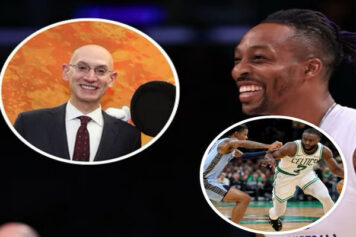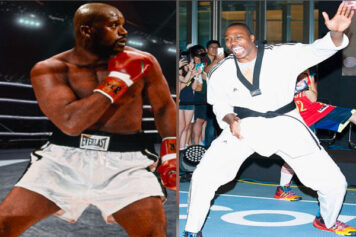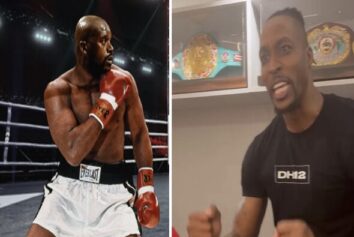There once was a time when the center position was considered essential for any basketball team to win. This was the case on all levels of play, but the NBA big man was a particular necessity for success. He was supposed to be able to rebound with reckless abandon, score with efficiency, protect the rim and defensively neutralize his counterpart. As recently as the late 70s and early 80s, centers who were considered second tier, guys like Joe Berry Carroll (17.7 PPG), Jack Sikma (15.6 PPG) and Bill Laimbeer (12.9 PPG), held their own against the very best on a night-to-night basis and even gave guys like Kareem Abdul Jabbar, Moses Malone and Artis Gilmore a run for their money on many occasions. Especially the hack-happy Laimbeer! The center was not supposed to be soft and if he dared shoot a shot beyond ten feet from the basket he was immediately pulled from the game and reprimanded. He was often the first option on offense and the last line of defense on the other end. By the 90's the center position was thought to be essential for any team to win.
This was what some considered the Golden Age of the NBA center. Hakeem “The Dream” Olajuwon, Patrick Ewing, Shaquille O’Neal, David Robinson, Alonzo Mourning and Brad Daugherty represented a class of big men that could score, rebound and play defense at a high level. It is a great irony that right in the midst of the heyday of the five position a non-center rose to prominence and eventually dominated the game. He played the shooting guard position and his name was Michael Jordan. He, and the backcourt of Isiah Thomas and Joe Dumars to a lesser extent, showed NBA GMs around the league that you did not necessarily need a dominant center to win an NBA championship. His center, a once promising but injury-hobbled big man named Bill Cartwright, averaged a pedestrian 8.8 points and 5 rebounds per game during championship series versus the Los Angeles Lakers in 1991.
The Jordan-led Bulls would dominate the 90s with six NBA championships in the decade. During the years that encompassed the majority of MJ’s first retirement the Houston Rockets and eventual Basketball Hall of Fame center Hakeem “The Dream” would win back to back championships. During their championship runs, The Dream dominated every superstar big man he came across in the playoffs on his way to winning titles in 1995 and 1996. Patrick Ewing got served up in ’94 and David Robinson and Shaquille O’Neal both got embarrassed, offensively and defensively, during the Rockets’ championship run in ’95. After the Houston Rockets’ champion ways ebbed Jordan won three more titles before the Finals would see another dominant big man.
That’s when the San Antonio Spurs won with the legendary frontcourt tandem of David Robinson and then neophyte Tim Duncan in 1999 by beating the New York Knicks. That was only the start of a five years stretch where dominating centers and power forwards won championships as Shaquille O’Neal led dominated in three straight Finals from 2000 through 2002. The 2005 Finals saw the emergence of Tim Duncan as a dominating force in the paint. He could play center with his back to the basket or step out and hit the bank shot with ease. The streak of NBA champions with dominant big men would end with the Detroit Pistons winning it all in 2004, but Duncan and the Spurs would win another one in 2005 and Shaquille O’Neal would turn back the clock in 2006 and play the proverbial Robin to Dwyane Wade’s Batman in winning the Miami Heat’s first title. Duncan would get another one in 2007 but the remaining NBA championships through 2013 would win with offenses that were keyed by wing players. Paul Pierce was the man on offense for the 2008 NBA champion Boston Celtics while Kevin Garnett did the lion’s share of his damage on defense. Yao Ming was drafted in 2002 with the first pick overall. He had a multitude of skills and was expected to the next great big. But all the hype fizzled into an early retirement due to nagging foot injuries. He had some great commercials though.
The Los Angeles Lakers won back-to-back titles in 2009-2010 with Kobe Bryant leading the way, the Dallas Mavericks won with Dirk Nowitzki, a jump shooting player who is a power forward in name only. Then, of course, LeBron James and D. Wade were the primary catalysts for back to back victories in 2012 and 2013. Although the Miami Heat would defeat the Indiana Pacers in seven games during the 2013 Eastern Conference Finals, center Roy Hibbert had a field day against the lithe Miami frontline. He did work to the tune of 22 points and 10 rebounds in the series. With that type of performance, as well as the trade of Dwight Howard to the Houston Rockets and the expected emergence of players like Andre Drummond (Detroit Pistons), Marcin Gortat (Washington Wizards), Greg Monroe (Detroit Pistons) and the possibility that Andrew Bynum would return to form and the league was buzzing with the hope that the game would return to a time when the big man was integral for victory in the NBA.
The Miami Heat, aware of these possibilities, even went out and signed former first overall pick Greg Oden to a contract hoping they could squeeze some defense out of his defective knees during a championship run. Now, as we stand on the verge of the playoffs, we see those dreams have turned into nightmares for many. Roy Hibbert appears to be a shadow of the man who did all that work in the playoffs and is playing worse and worse as the season is progressing, Andre Drummond can be spectacular but his Piston’s team was not good enough to make it to the playoffs and Andrew Bynum’s knees, and his professionalism, have prevented him from playing 30 games this season. So, what happened to all the chatter about the return of the big man? Well, aside from the fact that young centers and power forwards are no longer taught how to play with their backs to the basket, many NBA teams feature players who do not have the ability or desire to play off of a competent post player. Dwight Howard was once touted as the next great center in the NBA.
However, his brief stint in Los Angeles with Kobe Bryant revealed a dearth of passion and fire to dominate on both ends on a regular basis. In addition, the current manner in which NBA games are officiated means that big men aren’t necessarily allowed to throw their weight around. Offensive fouls are a maddening danger to NBA bigs, as well as flopping opponents. Some look lost when they get the ball in the paint because, without the ability to use their size to back down a player, they’re often forced to use a jump hook or turnaround jumper that they might not be confident in utilizing. Is the free flowing NBA more conducive to higher scores? Yes, that much is apparent. However, for old school fans of the game, that type of basketball is not of the same quality as that of the 90s, a time where big men were allowed to play as the goliaths they truly were.
I don’t mean to sound like the “Well, back in my day” type of guy, but I can tell you one thing for certain- Rik Smits would do work in the modern NBA as would Jack Sikma. These were players who weren’t perennial All-Stars during their careers, but it is easy to see how they would dominate in this era of small forwards, shooting guards and "stretch fours". The free flowing game is part of basketball evolution, but that don't mean I have to like it.



